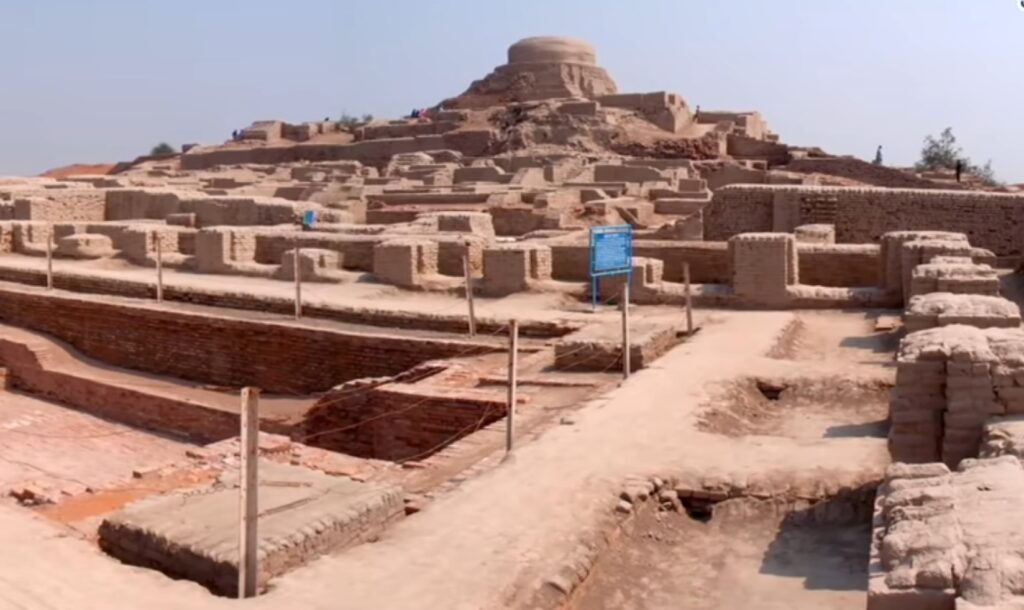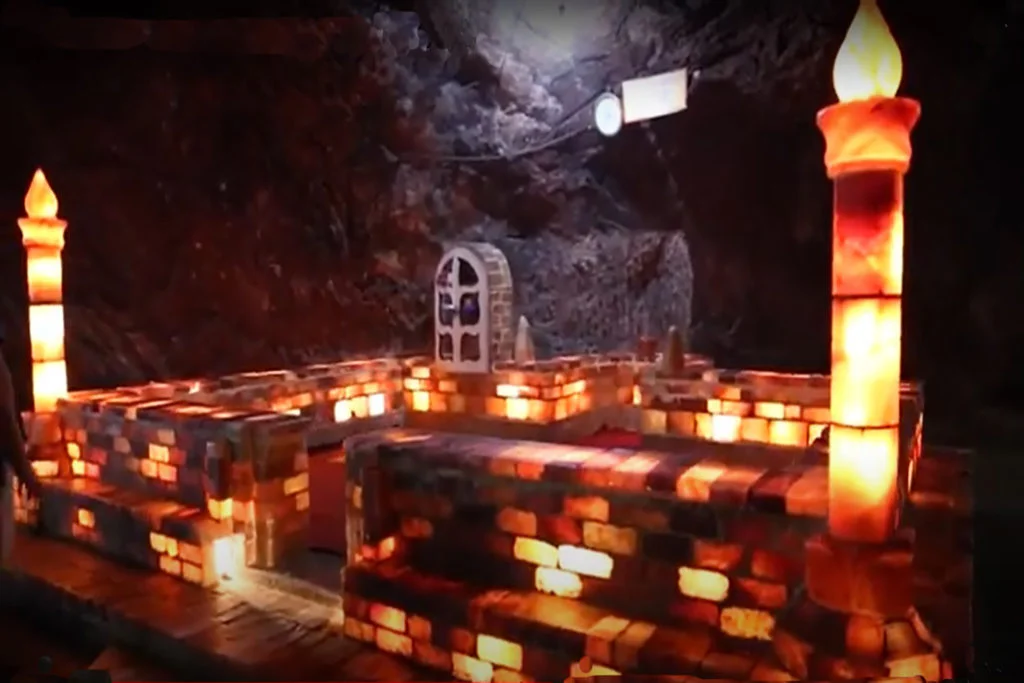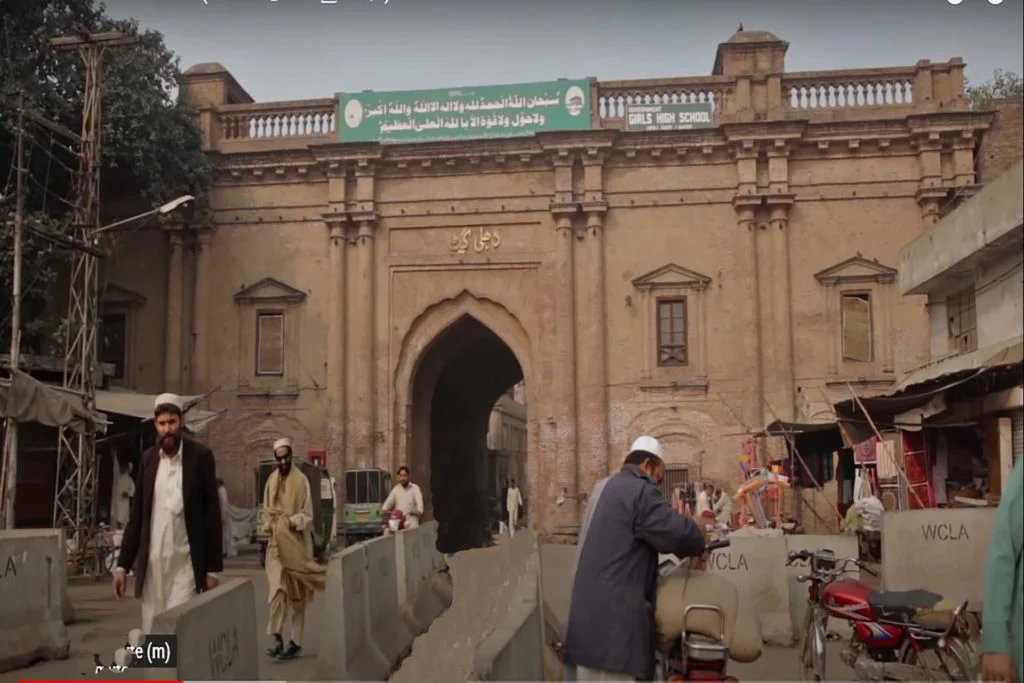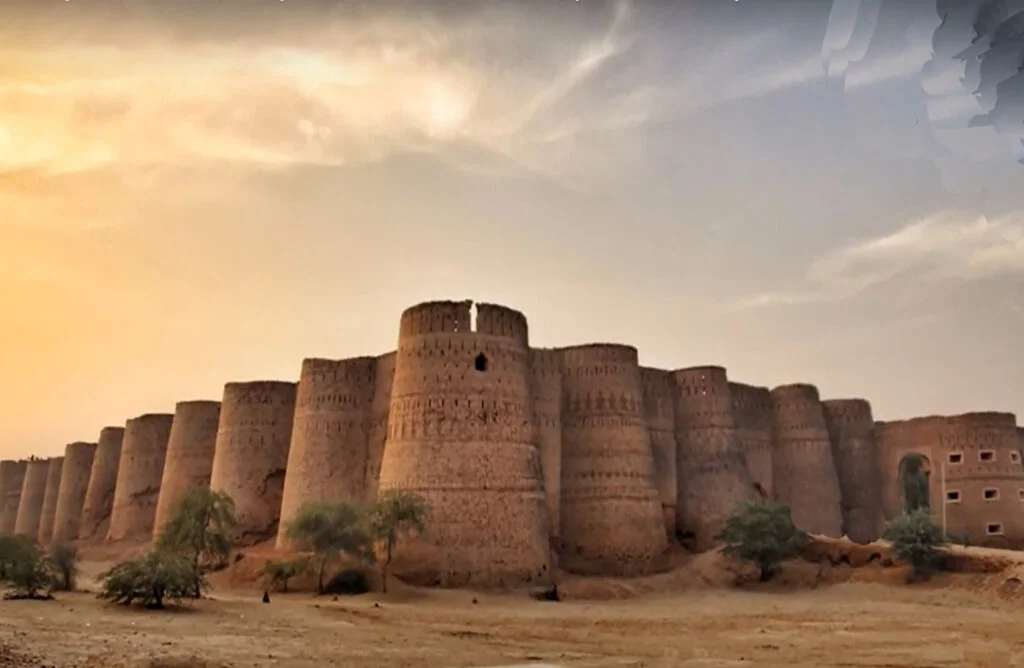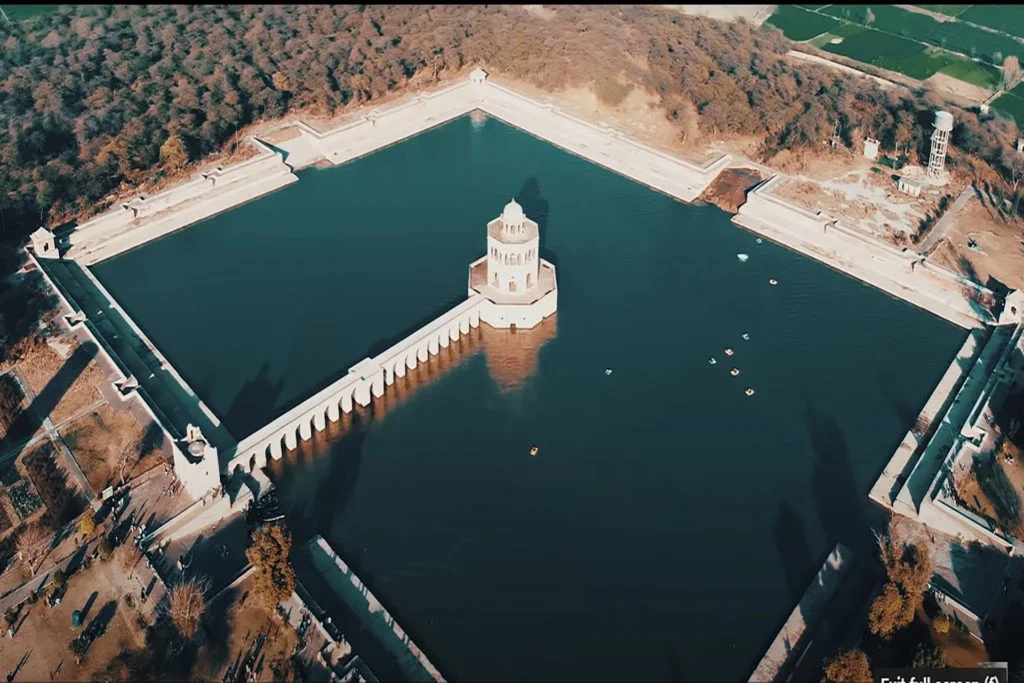The Indus Valley civilization, also known as the Harappan civilization, was a Bronze Age civilization that developed in the northwestern region of the Subcontinent from 2600 BCE to 1900 BCE. It was one of the world’s earliest urban civilizations, along with Mesopotamia and Egypt, and one of the most extensive and sophisticated of its time. The Indus civilization was characterized by its impressive urban planning, advanced sanitation systems, and sophisticated art and craft traditions.
The discovery of the Indus Valley Civilization is an intriguing chapter in the study of ancient civilizations. The civilization itself was first identified in the 1920s, when archaeologists began excavating the ruins of two ancient cities: Harappa and Mohenjo-daro. These sites are located in what is now modern-day Pakistan, along the Indus River.
The initial excavations at Harappa were led by Sir John Marshall, the Director-General of the Archaeological Survey of India. Between 1920 and 1921, Marshall and his team unearthed the remains of an advanced urban culture that existed around 2500 BCE. Soon after, similar discoveries were made at Mohenjo-daro by another team of archaeologists led by R.D. Banerji.
The significance of these findings became apparent as archaeologists unearthed well-planned cities with sophisticated drainage systems, brick houses, public baths, and an extensive network of streets. The cities displayed a level of urban planning and engineering prowess that was remarkable for the time period.
The Indus Valley civilization’s largest and most famous cities were Mohenjo-daro and Harappa, located in Pakistan. These cities were laid out on a grid system, with well-organized streets and houses made of baked brick. The houses had multiple rooms, and some even had private wells and bathrooms with sophisticated drainage systems that emptied into the street. The Indus people were experts in water management and had an intricate system of canals and reservoirs that ensured a steady supply of water to their cities.
Indus Valley civilization known for?
The Indus Valley civilization was an ancient urban civilization that thrived in the Indus River Valley in Pakistan and northwestern India from around 2600 BCE to 1900 BCE. It is known for several notable achievements and features:
Urban Planning: The cities of the Indus Valley civilization, such as Harappa and Mohenjo-daro, exhibited remarkable urban planning and organization. They featured grid-like street patterns, sophisticated sewage and drainage systems, and well-designed buildings made of standardized kiln-fired bricks.
Advanced Agriculture: The civilization relied on an advanced agricultural system. They practiced irrigation techniques, constructed reservoirs and canals to manage water supply, and cultivated crops like wheat, barley, peas, and cotton. Evidence suggests that they also had a strong knowledge of crop rotation.
Trade and Commerce: The Indus Valley civilization had an extensive trading network that extended to Mesopotamia (modern-day Iraq), Afghanistan, and the Persian Gulf. Archaeological findings, including seals and artifacts, indicate trade relations with these regions. The civilization’s central location made it a hub for trade in the ancient world.
Writing System: The civilization had a unique writing system, known as the Indus script, which has not yet been deciphered. The script is found on seals, pottery, and other artifacts. It is one of the earliest examples of writing in the Indian subcontinent.
Art and Craftsmanship: The Indus Valley civilization produced a range of artistic and craftwork. Archaeological discoveries have revealed beautifully crafted pottery, sculpture, jewelry (including beads made of semi-precious stones), and intricate seals depicting various animals and human figures.
Social Organization: The cities of the Indus Valley civilization displayed a high level of social organization. They had a complex hierarchical system, with evidence suggesting a ruling elite and a well-defined class structure. The presence of standardized weights and measures indicates a system of economic regulation.
Sophisticated Water Management: The civilization had an advanced understanding of water management. They built complex systems for water supply, drainage, and sewage disposal. Many houses had their own private wells and bathrooms, demonstrating an emphasis on hygiene and sanitation.
The Indus Valley civilization was also known for its sophisticated craft traditions, including pottery, metalworking, and bead-making. The Indus people produced high-quality ceramics with intricate designs and used a variety of metals, including bronze, gold, and silver, to make jewelry and tools. The civilization’s most famous artifact is the “Dancing Girl” statue, a bronze figure of a young girl in a dancing pose that was discovered in Mohenjo-daro.
The Indus Valley civilization’s economy was based on agriculture, and the people cultivated wheat, barley, and cotton. They also domesticated animals such as cattle, sheep, and goats. The Indus people engaged in long-distance trade, with evidence of contact with Mesopotamia and the Persian Gulf. The civilization’s decline is still a topic of debate, but it is thought to have been caused by a combination of factors, including climate change, environmental degradation, and possibly invasions by Indo-European tribes.
Who started the Indus Valley civilization?
The exact origins and founders of the Indus Valley civilization remain uncertain, as the civilization predates written historical records. The Indus Valley civilization emerged gradually over time, likely evolving from earlier Neolithic agricultural communities in the region.
Archaeological evidence suggests that the early stages of the civilization can be traced back to around 7000 BCE, with the development of agricultural settlements in the region. These settlements gradually grew in size and complexity, eventually culminating in the emergence of urban centers like Harappa and Mohenjo-daro around 2600 BCE.
The Indus Valley civilization was likely a result of the collective efforts and contributions of the people living in the region during that time. It is believed to have been a highly organized and cooperative society, with a sophisticated social structure, urban planning, and advanced agricultural practices.
While we do not have specific information about the individuals or groups that initiated the civilization, it is important to note that the development of complex societies and civilizations is often a gradual and collective process, influenced by numerous factors over an extended period of time.
Where did the Indus Valley civilization begin?
The Indus Valley civilization, also known as the Harappan civilization, is believed to have originated in the northwestern region of the subcontinent, primarily in what is now modern-day Pakistan. The civilization extended across a vast area, including parts of Pakistan, northwestern India, and eastern Afghanistan.
The two most prominent cities of the Indus Valley civilization were Harappa and Mohenjo-daro, both of which are located in Pakistan. Harappa is situated in the Punjab province, near the Ravi River, while Mohenjo-daro is located in the Sindh province, near the Indus River.
In addition to these major urban centers, numerous other smaller towns and settlements were part of the Indus Valley civilization. These settlements were spread along the course of the Indus River and its tributaries, such as the Ravi, Chenab, Jhelum, and Beas rivers. The civilization flourished in the fertile floodplain of the Indus River, which provided the necessary resources for agriculture and supported the growth of urban centers.
It is worth noting that the exact extent and boundaries of the Indus Valley civilization are still being explored by archaeologists and researchers. Excavations and discoveries continue to shed light on new sites and the interconnected nature of the civilization.
Why is it called Indus Valley?
The Indus Valley civilization is named after the Indus River, which is one of the longest rivers in Asia and flows through the region where the civilization thrived. The civilization’s heartland was located in the valleys of the Indus River and its tributaries.
When archaeologists began to explore the ancient ruins of this civilization in the 1920s, they discovered that many of the major sites, such as Harappa and Mohenjo-daro, were situated along the banks of the Indus River. The river played a crucial role in sustaining the agricultural practices and trade networks of the civilization.
Based on these geographical and archaeological findings, the civilization came to be commonly referred to as the Indus Valley civilization. This name has been widely used to describe the ancient urban society that developed in the region, emphasizing its close association with the Indus River and the valleys where its major settlements were located.
Who named Indus Valley?
The term “Indus Valley civilization” was coined by John Marshall, a British archaeologist who served as the Director-General of the Archaeological Survey of India in the 1920s. Marshall is credited with leading the excavations at the major sites of Harappa and Mohenjo-daro, which were crucial in uncovering the ancient civilization.
When Marshall and his team began their archaeological investigations, they were not aware of the full extent and significance of the civilization they were uncovering. However, as they discovered more sites and artifacts, they recognized the remarkable nature of the ancient urban society that thrived in the region.
Marshall chose the name “Indus Valley civilization” to highlight the central role of the Indus River and its associated valleys in the development and sustenance of the ancient civilization. The term has since become widely used to refer to this ancient urban society, also known as the Harappan civilization, which existed from around 2600 BCE to 1900 BCE.
Who first lived in the Indus Valley?
The Indus Valley civilization’s legacy can be seen in modern-day South Asia, with its influence on art, architecture, and urban planning. The grid layout of the cities and the sophisticated drainage systems used by the Indus people are still used in some parts of the region today. The Indus script, which has not yet been deciphered, is one of the world’s oldest writing systems and is an important part of the civilization’s legacy.
The earliest inhabitants of the Indus Valley region were likely Neolithic communities that practiced agriculture and settled in the area around 7000 BCE. These early communities were characterized by small-scale agricultural villages and a reliance on hunting, gathering, and rudimentary farming techniques.
Over time, these communities grew in size and complexity, leading to the development of the Indus Valley civilization. The civilization itself emerged around 2600 BCE and lasted until approximately 1900 BCE. The civilization’s urban centers, such as Harappa and Mohenjo-daro, were inhabited by a diverse population engaged in various occupations, including agriculture, trade, craftsmanship, and administration.
The Indus Valley civilization was a result of the gradual development and cultural evolution of the communities in the region. While specific details about the ethnic and linguistic identities of the early inhabitants are not known with certainty, it is believed to have been a multi-ethnic society with influences from different groups.
Genetic studies and archaeological evidence suggest that the population of the Indus Valley civilization had a mix of indigenous South Asian ancestry and ancestry related to the Iranian plateau. However, further research and analysis are still ongoing, and our understanding of the exact composition and origins of the Indus Valley civilization’s population continues to evolve.
Which is the largest Indus Valley site?
The largest and most well-known site of the Indus Valley civilization is Mohenjo-daro. Mohenjo-daro, meaning “Mound of the Dead,” is located in the Larkana District of Sindh province in present-day Pakistan.
Excavations at Mohenjo-daro were conducted in the 1920s by archaeologists, including Sir John Marshall, who played a significant role in uncovering and studying the remains of the Indus Valley civilization. The site covers an area of approximately 250 acres (100 hectares) and contains the remains of a well-planned urban center.
Mohenjo-daro was a thriving city with advanced infrastructure, including well-designed streets, brick-lined houses, public buildings, and an elaborate water management system. The Great Bath, an impressive water tank made of finely crafted bricks, is one of the notable structures at the site. It is believed to have had ritual and religious significance.
The significance of Mohenjo-daro extends beyond its size, as it provides valuable insights into the urban planning, architecture, social organization, and daily life of the Indus Valley civilization. The site’s preservation and discoveries have contributed greatly to our understanding of this ancient civilization.
What is the religion of the Indus Valley?
The religion of the Indus Valley civilization remains a subject of speculation and interpretation, as the civilization predates written historical records and the decipherment of the Indus script.
Due to the lack of written texts from the time, our knowledge of the religious beliefs and practices of the Indus Valley civilization is limited. However, archaeological evidence provides some clues about their religious and spiritual life.
One prominent feature of the civilization is the presence of numerous small, stone or clay figurines depicting various anthropomorphic and zoomorphic forms. These figurines, often interpreted as representations of deities or divine beings, suggest that the people of the Indus Valley had a belief system that involved worship or reverence for supernatural entities.
Another significant find is the presence of seals depicting animals, such as bulls, elephants, and tigers, often in a stylized and iconic manner. Some of these seals also show figures seated in a yogic or meditative posture, possibly indicating the presence of ritual or spiritual practices.
The discovery of a large public bath in Mohenjo-daro, known as the Great Bath, has led to speculation that water may have held symbolic or ritualistic significance in the religious practices of the civilization.
It is important to note that these interpretations are based on archaeological evidence, and there is still much debate and speculation among scholars regarding the precise nature of the religious beliefs and rituals of the Indus Valley civilization. The lack of deciphered written texts makes it challenging to fully understand their religious system and cosmology.
Who ruled the Indus Valley?
The ruling authority or political structure of the Indus Valley civilization is not yet fully understood due to the lack of deciphered written records from that time. The absence of clear historical and literary sources makes it challenging to identify specific rulers or ascertain the nature of governance in the civilization.
The Indus Valley civilization is often characterized as having had a highly organized and centralized system of governance. The presence of well-planned cities with sophisticated urban infrastructure suggests the existence of a complex administrative apparatus.
Some scholars speculate that the civilization may have been governed by a hierarchical system with a ruling elite or a centralized authority overseeing various aspects of society. This may have involved an administrative class responsible for managing urban planning, trade, taxation, and other societal affairs.
However, it is important to note that the exact political structure and power dynamics of the Indus Valley civilization remain uncertain. The absence of deciphered written texts, such as royal inscriptions or historical accounts, hinders our understanding of the specific rulers and political institutions of that time.
Archaeological research and ongoing discoveries continue to contribute to our understanding of the civilization’s governance, but further evidence and analysis are necessary to provide a more comprehensive picture of the ruling authority of the Indus Valley civilization.
What are 5 facts about the Indus River Valley?
Geographic Significance: The Indus River Valley is one of the world’s oldest and most significant river valleys. It stretches across modern-day Pakistan and parts of northwestern India and is formed by the Indus River and its tributaries.
Birthplace of the Indus Valley Civilization: The Indus River Valley is the birthplace of the Indus Valley civilization, also known as the Harappan civilization. This ancient urban civilization thrived in the region from approximately 2600 BCE to 1900 BCE.
Vast Size and Cultural Spread: The Indus River Valley civilization covered a vast area, spanning over 1,000 miles from northeast to southwest. It encompassed numerous urban centers, towns, and rural settlements, showcasing a high level of cultural diffusion and interconnectedness.
Agricultural Productivity: The fertile floodplain of the Indus River supported the agricultural practices of the Indus Valley civilization. The people cultivated a variety of crops, including wheat, barley, peas, cotton, and possibly rice. Sophisticated irrigation systems, including canals and reservoirs, were employed to manage water resources effectively.
Decline and Mystery: The decline of the Indus Valley civilization remains a subject of debate and speculation. Around 1900 BCE, the civilization experienced a gradual decline, marked by the abandonment of urban centers and a shift towards smaller rural settlements. The exact reasons for this decline are still unclear, with factors such as environmental changes, natural disasters, and socio-political instability being proposed as possible causes.
Four important sites of the Indus Valley Civilization
The Indus Valley civilization had numerous archaeological sites, but four of the most important and well-known ones are:
Mohenjo-daro: Located in present-day Pakistan, Mohenjo-daro is one of the largest and most prominent cities of the Indus Valley civilization. It flourished around 2600 BCE to 1900 BCE and was a center of economic, political, and cultural activities. The site’s well-preserved structures, including the Great Bath and the Granary, provide insights into the urban planning and advanced infrastructure of the civilization.
Harappa: Situated in modern-day Pakistan, Harappa is another major urban center of the Indus Valley civilization. It dates back to around 2600 BCE and was a thriving city with an advanced drainage system, brick-lined streets, and multi-roomed houses. The discovery of the Harappan script and extensive artifacts, such as seals and pottery, have contributed to our understanding of the civilization’s writing system and trade networks.
Dholavira: Located in present-day Gujarat, India, Dholavira is one of the largest and most well-preserved sites of the Indus Valley civilization. It was inhabited from approximately 2900 BCE to 1500 BCE and features elaborate fortifications, reservoirs, and a sophisticated water management system. The site’s unique water harvesting structures, including large reservoirs and channels, reflect the civilization’s advanced knowledge of water conservation.
Lothal: Situated in Gujarat, India, Lothal was an important port city of the Indus Valley civilization. It was a center of maritime trade and played a significant role in connecting the civilization to other regions. The site showcases well-planned dockyards, a warehouse, and evidence of craft specialization, including bead-making and metallurgy.
These four sites, Mohenjo-daro, Harappa, Dholavira, and Lothal, have provided invaluable insights into the urban planning, trade networks, craftsmanship, and cultural practices of the Indus Valley civilization.
The decline and ultimate collapse of the Indus Valley civilization remain a subject of debate among scholars, with factors such as environmental changes, natural disasters, and socio-political instability being proposed as possible causes. Nevertheless, the civilization’s legacy is evident in its urban planning, agricultural practices, and trade networks, which have had a lasting impact on the subsequent civilizations in the Indian subcontinent.
In conclusion, the Indus Valley civilization was an impressive Bronze Age civilization that developed in the northwestern region of the Indian subcontinent. Its well-planned cities, sophisticated water management systems, and advanced craft traditions are a testament to the civilization’s ingenuity and innovation. Despite its decline, the Indus civilization’s legacy continues to influence the art, architecture, and urban planning of the region to this day.

